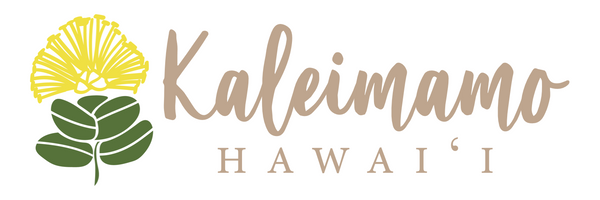ʻElepaio Hā Kea
‘Elepaio Hā Kea is a beautiful variety of kalo (taro), which is significant in Hawaiian culture. It is known for appealing green and white spots on its leaves, similar to the ‘Elepaio bird’s feathers. This type of kalo may have also gotten its name as it grew wild near the forest where the ‘Elepaio lived, or because farmers would plant this variety at dawn when the ‘Elepaio bird sang. Kea means white or fair, and refers to this plant’s light-colored stem or stalk. Often mistaken for ‘Elepaio Hā Uliuli, the ‘Elepaio Hā Kea is distinguished by its narrower leaves, green hā at maturity, and light pink corm with pink fibers. Its striking green and white mottling varies with environmental conditions, adding to its appeal.

Typically grown in māla (dryland cultivation), this kalo variety relies on rainfall for irrigation and thrives in moist environments. Although, it can also adapt to drier conditions with proper mulching. Dryland farms often used fern fronds as mulch during dry periods and removal when rainfall was adequate. Other mulching materials included banana stumps, fermented breadfruit, and burnt coconut fiber ash. To cultivate dryland kalo, huli (taro shoots) were planted in soil mounds to allow ample room for corm expansion. An ‘ō‘ō (digging stick) prepared the planting holes, and mulch was placed around the base. Natural rainfall provided the necessary water. Dryland kalo takes longer to mature than wetland varieties, typically requiring 8-12 months, and some varieties could stay in the soil for an additional three to twelve months beyond maturity. Most Lauloa varieties can remain in the ground indefinitely. The mature taro is usually eaten in chunks after being baked or steamed.

